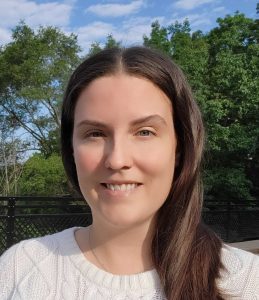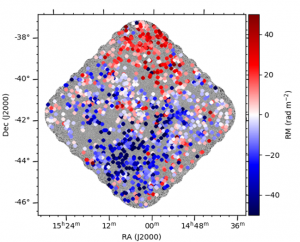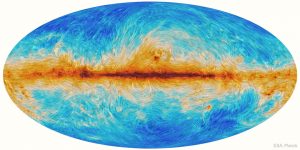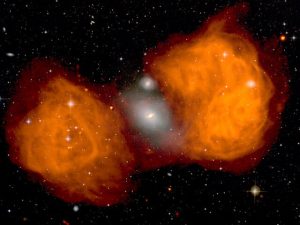Shannon is in her second year as a PhD student at the University of Toronto, with a focus on radio astronomy and magnetism. She completed her Honours Physics and Astronomy specialist degree at the University of Toronto, and received the Royal Astronomical Society of Canada Gold Medal Award from the RASC, Toronto Centre in 2019.
How did you first become interested in Astronomy and Astrophysics?
I think the thing that makes astronomy so interesting to me, and what drew me to the field, is the scale of objects and events that occur in the Universe and how violent and extreme many environments can be. It always amazes me how we can observe, study, and learn so much about things that have happened at such great distances from us and even millions of years in the past.
Can you tell us a little bit about your specific field of research?
Magnetic fields are everywhere in the Universe and may be an important factor in how objects like galaxies act and evolve. I look at how we can use the rotation of polarized radio light from both Galactic and extragalactic sources to understand the characteristics of magnetic fields in our own Milky Way and in other galaxies. On the Galactic side, I use this rotated emission to map the magnetic field structure of the Milky Way in regions of the sky. On the extragalactic side, I’m interested in the structure and properties of magnetic fields that are found in the colossal relativistic jets of matter that are ejected from the supermassive blackholes at the centres of radio galaxies.
What’s the most exciting thing about your research?
The most exciting thing about my research is that I get to work with data from the Australia Square Kilometre Array Pathfinder (ASKAP), a new state-of-the-art telescope that is detecting polarised radio signals from an unprecedented number of radio galaxies. With this vast amount of data, we can do amazing things, such as produce detailed maps of the magnetic field structure in the Milky Way. It also allows us to perform statistical studies of objects that previously have been limited to smaller sample sizes, including radio galaxy jets.
What do you hope will be your next step, professionally?
I’m currently preparing for my thesis qualification exam this month and working on my first research paper. In the long term I hope to apply the skills I have gained working with large data sets to a career in industry.





